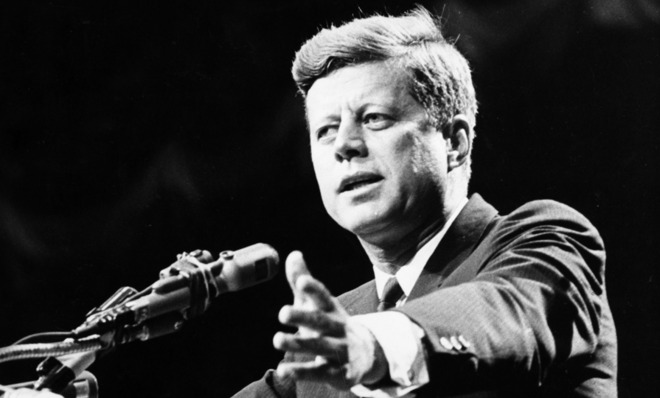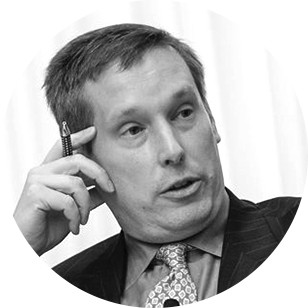JFK's murder was not a conspiracy
It's been nearly 50 years. It's time to face facts.


The 50th anniversary of the assassination of President John F. Kennedy on November 22, 1963, is fast approaching. The murder of America's 35th president was a monstrously traumatic, instantly unforgettable event. It was over in about six seconds. And we've been arguing about it ever since.
Today, 59 percent of Americans believe the president's murder was the result of a conspiracy. That's actually down from 75 percent a decade ago. But the fact is, after half a century, such conspiracy theories have never been conclusively proven. These theories are fueled by shadowy photos, odd coincidences, conjecture, and distrust in government. But there is no proof, after all this time, that anyone other than Lee Harvey Oswald had anything to do with the assassination.
Still, the many theories make for colorful debate. Let's take a look at one of the more popular ones, which was first sparked 50 years ago Tuesday — October 15, 1963 — when Lee Harvey Oswald was hired to work at the Texas School Book Depository, which overlooks Elm Street, where the assassination would soon occur. He was planted there, conspiracy buffs argue, and Kennedy's motorcade route was deliberately planned to put the president within the crosshairs of Oswald's rifle.
Subscribe to The Week
Escape your echo chamber. Get the facts behind the news, plus analysis from multiple perspectives.

Sign up for The Week's Free Newsletters
From our morning news briefing to a weekly Good News Newsletter, get the best of The Week delivered directly to your inbox.
From our morning news briefing to a weekly Good News Newsletter, get the best of The Week delivered directly to your inbox.
The evidence contradicts such speculation. It helps, first of all, to know about Oswald's history in the preceding 12 months. He was fired from three different menial jobs in Dallas and New Orleans. Each time, he racked up a poor work record and alienated himself from bosses and co-workers. At one job, greasing machinery for a coffee company, a supervisor, Charles LeBlanc, recalls Oswald walking around aiming his forefinger at people. "He would go 'Pow!'" LeBlanc says. Oswald's supervisor recalls thinking to himself, "What a crackpot this guy is!"
But Oswald, a smug, uneducated drifter, didn't just hint at violence. He regularly beat his wife, Marina, even when she was pregnant. In April 1963, he tried to shoot a leading right-wing figure in Dallas (ironically an enemy of President Kennedy), an event Oswald detailed extensively in his diary. Two weeks later he planned to bring his .38 to a Dallas event where Richard Nixon would be appearing — until an alarmed Marina forced him into the bathroom and refused to let him out until he calmed down and gave her the gun. And in August 1963, says Marina, he asked her to help hijack a plane to Cuba. She refused. "Our Papa is crazy!" Marina told their daughter.
Oswald returned to Dallas on October 4, 1963 (after a failed attempt to go to Cuba or return to the Soviet Union) with no job, no money, and no prospects. About to become a father for the second time, he needed work desperately.
That Oswald found work at the Book Depository is nothing less than a miracle. Many little pieces, seemingly unconnected, had to fall into place — and they did.
A free daily email with the biggest news stories of the day – and the best features from TheWeek.com
Just a week before, Oswald nearly got a job as a typesetter trainee at a printing company far from what would be President Kennedy's motorcade route. He wanted the job badly, and made a favorable impression on his would-be-boss — until the boss called Bob Stovall, a prior boss at Padgett Printing Co., who fired Oswald in April 1963. Stovall told him of Oswald's poor attitude and lazy work habits. He was a troublemaker and may be a communist, Stovall said, adding, "If I was you, I wouldn't hire him."
Had Oswald been hired, the world never would have heard of him, and it's likely President Kennedy's visit to Dallas would have gone smoothly — as it did until his dark blue Lincoln Continental turned onto Elm Street.
It's also important to note that even though Oswald was about to become a father for the second time, he lived alone, in a cheap rooming house in the Oak Cliff section of Dallas. Marina, eight months pregnant and tired of Oswald's beatings and unstable behavior, was living in suburban Irving at the home of Ruth Paine, a woman who had previously befriended the Oswalds. Ruth, no stranger to Oswald's mistreatment of Marina, made it clear that he would have to live elsewhere, and could only visit with her and Marina's approval.
On the morning of October 14, Ruth and Marina were having coffee at a neighbor's house. At one point, the conversation turned to Oswald and the fact that he needed a job.
Two possibilities were raised: one at a local bakery and another at a gypsum plant. But those jobs required driving, and Oswald didn't know how to drive. His prospects were narrow. But another neighbor in the little coffee klatch, Linnie Mae Randall, mentioned that her brother had just gotten a job at a place called the Texas School Book Depository downtown. It was the busy season, Linnie Mae said, and perhaps they could use another man.
Ruth Paine and Marina, who wanted Oswald to pull his weight, called the Depository. Superintendent Roy Truly said he would see Oswald the next day, October 15.
As he did at the printing company, Oswald made a good impression during the interview. He called Truly "sir," which impressed Truly. He also lied to Truly that he was just out of the Marines (Oswald got out in 1959 and had his discharge reduced to "dishonorable" after defecting to the Soviet Union). Truly didn't bother to check Oswald's references and offered him a job filling book orders for $1.25 an hour. Oswald thought it beneath him, but needing a paycheck, took the job.
The printing company, the bakery, the gypsum plant — had any of those jobs worked out, Oswald would not have been in a position to shoot President Kennedy on November 22. And there's something else many conspiracy theorists overlook: The Texas School Book Depository had two locations in 1963. Truly, Oswald's boss, nearly told Oswald to report to a storage warehouse elsewhere, but at the last minute, decided he could use the extra help at the main location — in Dealey Plaza.
It took a string of tiny things to put Lee Harvey Oswald in the Texas School Book Depository on November 22, 1963. If it was a conspiracy, then everyone, at each point along the way, would have had to be in on it. One boss checked references, another didn't. Neighbors gossiping over coffee and cigarettes. The wrong skills for one job, the right skills for another. A warehouse here, or a warehouse there. Had any one of these minor footnotes to history been slightly different, what would our world be like today?
An award-winning member of the White House press corps, Paul Brandus founded WestWingReports.com (@WestWingReport) and provides reports for media outlets around the United States and overseas. His career spans network television, Wall Street, and several years as a foreign correspondent based in Moscow, where he covered the collapse of the Soviet Union for NBC Radio and the award-winning business and economics program Marketplace. He has traveled to 53 countries on five continents and has reported from, among other places, Iraq, Chechnya, China, and Guantanamo Bay, Cuba.



